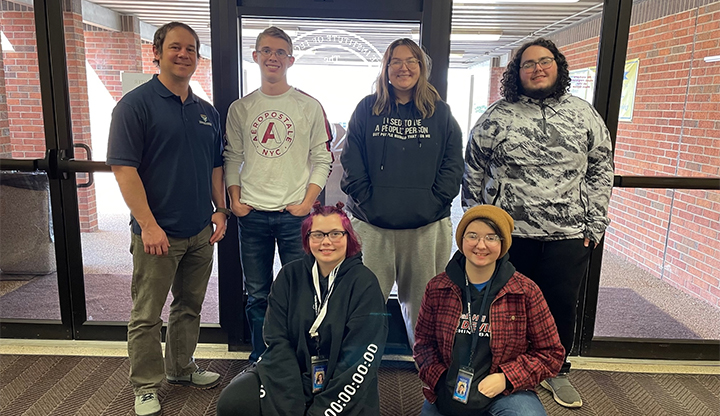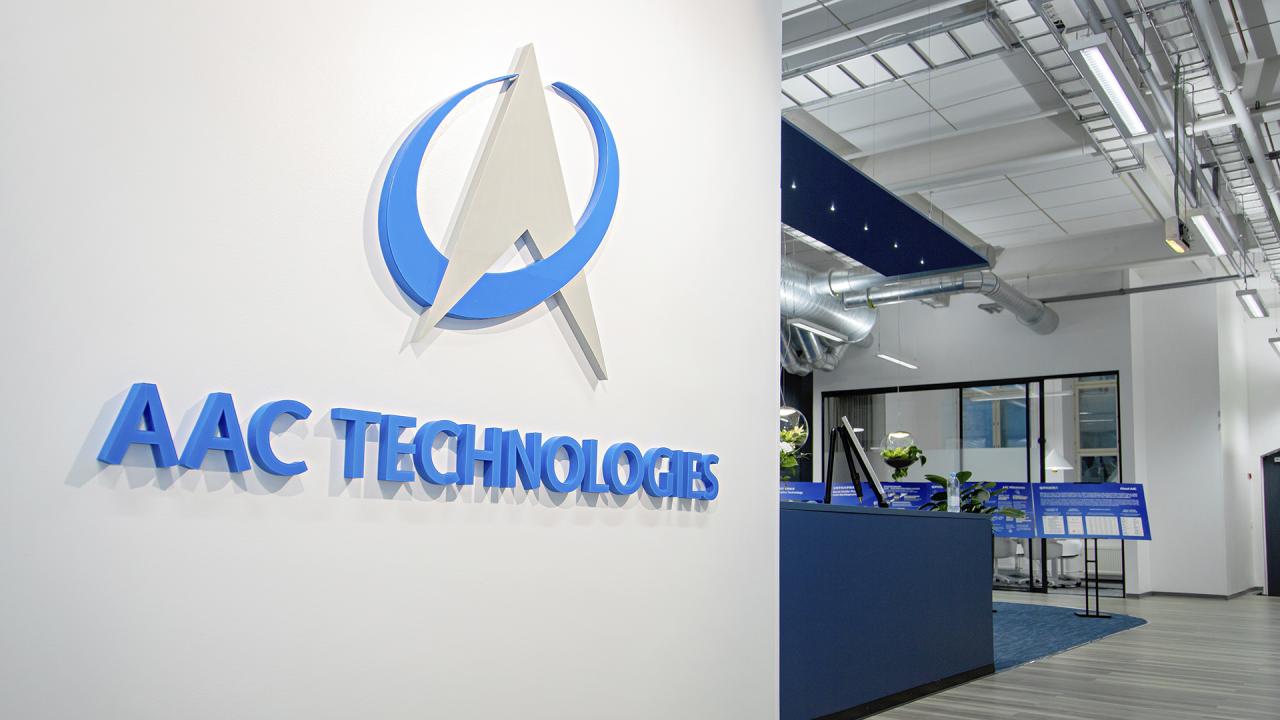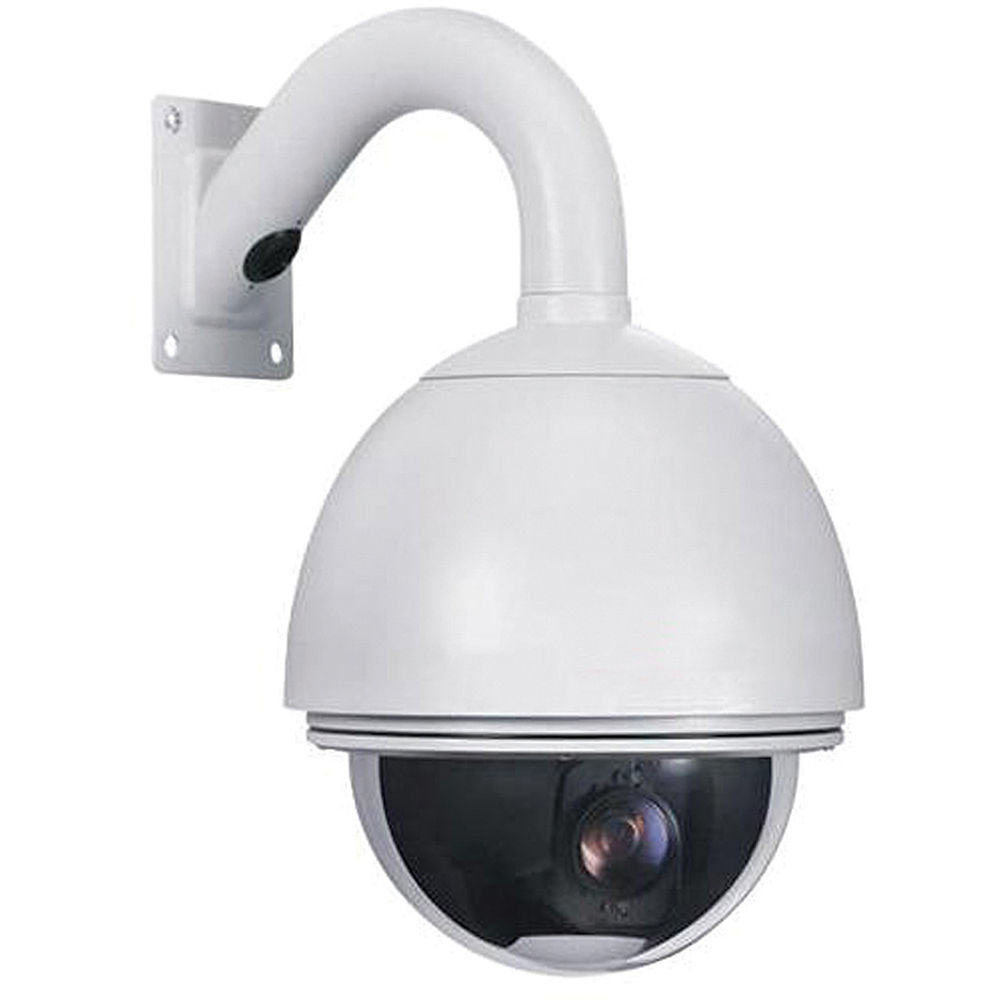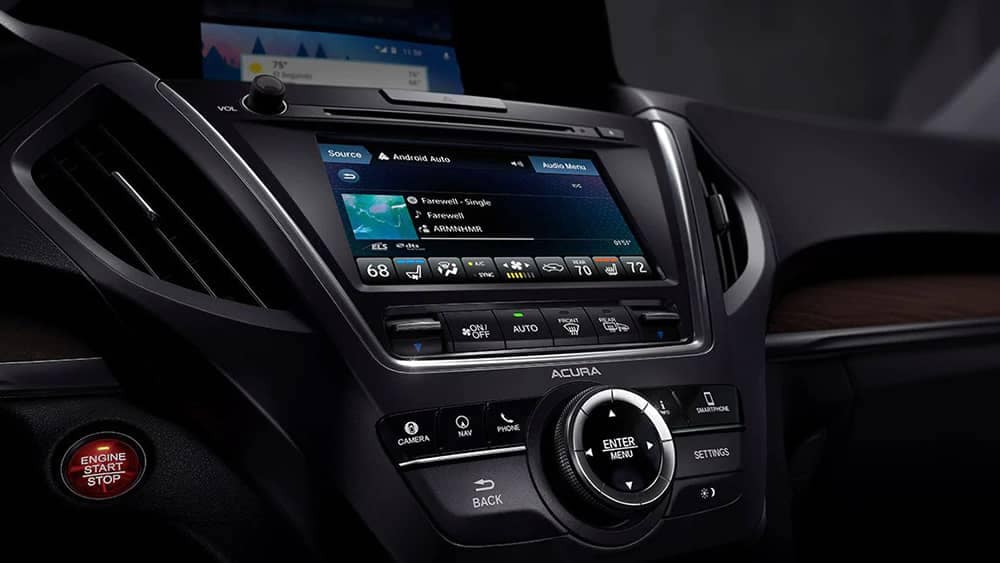Uni Smart Technology: Transforming Higher Education
Uni smart technology is revolutionizing the way universities operate, learn, and connect. From personalized learning platforms to smart buildings and cutting-edge research tools, universities are embracing technology to enhance every […]

Uni smart technology is revolutionizing the way universities operate, learn, and connect. From personalized learning platforms to smart buildings and cutting-edge research tools, universities are embracing technology to enhance every aspect of campus life.
This technology encompasses a wide range of applications, from virtual reality simulations to data-driven decision-making, all aimed at creating a more efficient, engaging, and accessible learning environment for students, faculty, and staff.
The Evolution of Smart Technology in Universities
The integration of smart technology in universities has dramatically transformed the learning landscape, fostering innovation, efficiency, and personalized experiences. From the early days of computer labs to the sophisticated systems of today, universities have embraced technology to enhance teaching, research, and campus operations. This evolution has been marked by significant milestones and innovations, shaping the modern university experience.
Early Applications and Key Milestones
The adoption of technology in universities began with the introduction of computers in the 1960s. These early applications primarily focused on administrative tasks, such as student record management and research data analysis. The development of the internet in the 1990s revolutionized communication and information access, paving the way for online learning platforms and digital libraries. Universities embraced these advancements, establishing virtual learning environments (VLEs) and providing students with access to vast online resources.
- 1960s: Introduction of computers for administrative tasks and research data analysis.
- 1990s: The internet revolutionized communication and information access, leading to the emergence of online learning platforms and digital libraries.
- 2000s: Universities began implementing Learning Management Systems (LMS) to facilitate online course delivery and student engagement.
Innovations in Learning and Teaching
Smart technology has played a pivotal role in transforming learning and teaching methodologies. Universities have implemented interactive learning platforms, virtual reality (VR) simulations, and adaptive learning systems to create engaging and personalized learning experiences. The use of data analytics provides insights into student performance, allowing educators to tailor their teaching strategies and provide targeted support.
- Interactive Learning Platforms: Platforms like Moodle and Canvas provide a collaborative learning environment, enabling students to access course materials, participate in discussions, and submit assignments online.
- Virtual Reality Simulations: VR simulations offer immersive learning experiences, allowing students to interact with complex environments and concepts in a safe and controlled setting. For example, medical students can practice surgical procedures in a virtual operating room.
- Adaptive Learning Systems: These systems personalize learning pathways by adapting to individual student needs and learning styles. They provide tailored feedback, identify areas for improvement, and recommend relevant resources.
Enhancing Research and Innovation
Smart technology has revolutionized research processes, enabling universities to conduct cutting-edge research and foster innovation. High-performance computing clusters and cloud-based platforms provide researchers with access to powerful computing resources, facilitating complex simulations, data analysis, and scientific discovery.
- High-Performance Computing Clusters: These clusters provide researchers with immense computing power, enabling them to perform complex simulations and analyze massive datasets.
- Cloud-Based Platforms: Cloud computing offers scalable and flexible computing resources, allowing researchers to access and share data, collaborate on projects, and develop innovative applications.
- Data Analytics and Artificial Intelligence (AI): Universities leverage data analytics and AI to extract valuable insights from research data, identify trends, and develop new hypotheses.
Optimizing Campus Operations, Uni smart technology
Smart technology has also been instrumental in improving campus operations, enhancing safety, security, and sustainability. Universities have implemented smart building systems, energy management solutions, and security systems to create a more efficient and secure campus environment.
- Smart Building Systems: These systems automate building functions, such as lighting, heating, and ventilation, optimizing energy consumption and creating a comfortable environment for students and staff.
- Energy Management Solutions: Universities use smart meters and data analytics to monitor energy usage, identify areas for improvement, and reduce their carbon footprint.
- Security Systems: Smart security systems, including surveillance cameras, access control systems, and emergency response systems, enhance campus safety and security.
Applications of Smart Technology in Universities

Smart technology has permeated various aspects of university life, transforming the way students learn, researchers innovate, and institutions operate. From personalized learning platforms to smart campus infrastructure, these technologies are revolutionizing the university experience, enhancing efficiency, and fostering a more connected and engaging environment.
Learning and Teaching
Smart technology is redefining the learning landscape, offering personalized and interactive experiences that cater to individual student needs.
- Personalized learning platforms provide customized learning paths, tailored to each student’s learning style, pace, and goals. These platforms utilize data analytics to identify individual strengths and weaknesses, suggesting relevant learning materials and activities. For example, platforms like Khan Academy and Coursera offer adaptive learning experiences, adjusting the difficulty level of content based on student performance.
- Interactive learning environments engage students through immersive and collaborative experiences. Virtual reality (VR) and augmented reality (AR) applications create realistic simulations, allowing students to explore complex concepts in a hands-on manner. For instance, medical students can practice surgical procedures in VR simulations, while history students can virtually visit historical sites using AR applications.
- Virtual and augmented reality applications enhance traditional learning methods by providing immersive and interactive experiences. VR simulations allow students to experience historical events, explore the human body, or practice complex skills in a safe and controlled environment. AR applications overlay digital information onto the real world, providing context and enriching learning experiences. For example, students can use AR applications to view anatomical models superimposed on a real human body or to explore historical sites with virtual tours and interactive elements.
- Adaptive learning systems continuously monitor student progress and adjust the learning content and pace accordingly. These systems use algorithms to analyze student performance data, identifying areas where students need additional support or challenges. Adaptive learning platforms like Duolingo and Khan Academy provide personalized feedback and recommendations, helping students learn at their own pace and focus on areas where they need improvement.
Research and Innovation
Smart technology empowers researchers with advanced tools and data analytics capabilities, accelerating innovation and driving groundbreaking discoveries.
- Advanced research tools and data analytics provide researchers with powerful tools to analyze large datasets, identify patterns, and generate insights. These tools include statistical software, machine learning algorithms, and high-performance computing systems. Researchers can leverage these technologies to analyze vast amounts of data from various sources, uncovering new trends, developing innovative solutions, and pushing the boundaries of scientific knowledge.
- Smart labs and research facilities utilize sensors, automation, and data analytics to optimize research processes and enhance safety. Smart labs can monitor environmental conditions, track equipment usage, and automate experiments, improving efficiency and reducing errors. For example, automated robotic systems can perform repetitive tasks in laboratories, freeing up researchers to focus on more complex aspects of their work.
- Collaboration platforms for international research facilitate communication and collaboration among researchers worldwide. Online platforms enable researchers to share data, conduct virtual meetings, and collaborate on projects regardless of geographical location. These platforms promote knowledge exchange, accelerate research progress, and foster international scientific partnerships.
Campus Operations and Management
Smart technology optimizes campus operations, enhancing efficiency, safety, and sustainability.
- Smart building systems for energy efficiency and security use sensors, automation, and data analytics to monitor and control building systems, reducing energy consumption and improving security. These systems can adjust lighting, heating, and ventilation based on occupancy levels, optimize energy usage, and detect security threats in real-time. For example, smart building systems can identify areas with high energy consumption, suggesting ways to reduce waste and improve efficiency.
- Campus-wide connectivity and digital infrastructure provide students, faculty, and staff with seamless access to information and services. High-speed internet connectivity, Wi-Fi networks, and digital platforms enable students to access online learning resources, collaborate on projects, and stay connected with the university community. A robust digital infrastructure also supports research activities, administrative processes, and campus-wide communication.
- Smart transportation systems and campus navigation improve campus mobility and reduce congestion. These systems include GPS-based navigation apps, real-time traffic updates, and smart parking solutions. Students and staff can easily navigate the campus, find parking spaces, and plan their routes, reducing travel time and improving the overall campus experience.
Student Life and Well-being
Smart technology enhances student life, providing support services, promoting safety, and fostering a sense of community.
- Student support systems and mental health resources offer personalized assistance and guidance to students. Online platforms and mobile apps provide access to academic advising, career counseling, and mental health services. Students can connect with support staff, access resources, and seek help when needed, promoting their academic and personal well-being.
- Smart campus security and safety measures utilize surveillance systems, access control, and emergency response systems to ensure a safe and secure campus environment. Smart security systems can detect suspicious activity, monitor access points, and alert security personnel in case of emergencies. These measures provide students and staff with a sense of security and contribute to a positive campus atmosphere.
- Online communities and student engagement platforms foster a sense of community and provide opportunities for students to connect with each other, participate in events, and stay informed about campus activities. These platforms allow students to share information, discuss ideas, and build relationships, creating a vibrant and engaging campus environment.
Impact of Smart Technology on University Life
Smart technology has profoundly transformed various aspects of university life, impacting students, faculty, and the campus environment in unprecedented ways. This section explores the transformative influence of smart technology on these key areas, highlighting both the benefits and challenges associated with its implementation.
Student Experience
Smart technology has revolutionized the student experience, offering increased accessibility, enhanced engagement, and personalized learning opportunities.
- Increased Accessibility and Flexibility in Learning: Online learning platforms, mobile apps, and virtual reality tools have expanded access to education, breaking down geographical barriers and providing greater flexibility for students with diverse needs and schedules. This allows students to learn at their own pace and access resources from anywhere, anytime.
- Enhanced Student Engagement and Collaboration: Interactive learning platforms, online discussion forums, and collaborative workspaces foster active participation and collaboration among students, promoting deeper understanding and critical thinking. These tools allow students to connect with peers and faculty members in real-time, fostering a more dynamic and engaging learning environment.
- Personalized Learning Experiences Tailored to Individual Needs: Adaptive learning platforms, personalized learning dashboards, and AI-powered tutoring systems cater to individual learning styles and needs, providing customized learning pathways and targeted support. This personalized approach empowers students to learn effectively at their own pace and maximize their potential.
Future Trends in University Smart Technology: Uni Smart Technology
Universities are at the forefront of innovation, constantly seeking ways to enhance the learning experience and optimize campus operations. As technology continues to evolve at an unprecedented pace, universities are embracing smart technology solutions to transform their operations and create a more connected, efficient, and personalized learning environment. This section explores emerging trends and future directions in university smart technology, highlighting key technologies and their potential impact on higher education.
Artificial Intelligence and Machine Learning
Artificial intelligence (AI) and machine learning (ML) are poised to revolutionize higher education by enabling personalized learning experiences, automating administrative tasks, and providing insights into student success.
- Personalized Learning Recommendations: AI-powered platforms can analyze student data, including academic performance, learning styles, and interests, to provide tailored recommendations for courses, learning resources, and study strategies. These personalized recommendations can help students stay engaged, motivated, and on track towards their academic goals.
- Automated Grading and Feedback Systems: AI-powered grading systems can automate the evaluation of assignments, quizzes, and exams, freeing up instructors’ time for more meaningful interactions with students. These systems can also provide personalized feedback, identifying areas for improvement and suggesting resources for further learning.
- Predictive Analytics for Student Success: AI algorithms can analyze student data to identify early warning signs of academic struggles and predict potential dropout risks. This allows universities to intervene proactively and provide support services to students at risk of falling behind.
For example, the University of California, Berkeley, has implemented an AI-powered system called “CalCentral” that uses student data to provide personalized recommendations for courses and resources, track student progress, and predict academic success. This system has been shown to improve student engagement and retention rates.
Internet of Things (IoT)
The Internet of Things (IoT) connects physical devices and sensors to create a network of interconnected objects that can collect and exchange data. In universities, IoT technology can be used to create smart classrooms, monitor campus infrastructure, and optimize campus operations.
- Smart Classrooms and Labs with Interconnected Devices: IoT-enabled classrooms can integrate smart devices such as interactive whiteboards, sensors, and projectors to create a dynamic and engaging learning environment. These devices can collect data on student engagement, classroom temperature, and lighting conditions, allowing instructors to optimize the learning experience in real-time.
- Real-time Monitoring of Campus Infrastructure: IoT sensors can be deployed throughout campus to monitor energy consumption, building security, and environmental conditions. This data can be used to optimize resource allocation, improve safety, and ensure a comfortable and sustainable campus environment.
- Data-driven Decision-making for Campus Operations: IoT data can be used to analyze campus traffic patterns, optimize parking availability, and manage facilities maintenance. This data-driven approach can improve efficiency, reduce costs, and enhance the overall campus experience.
For instance, the University of Michigan has implemented an IoT-based system that monitors energy consumption in campus buildings, allowing them to identify areas for energy savings and reduce their environmental impact.
Virtual and Augmented Reality
Virtual reality (VR) and augmented reality (AR) technologies offer immersive and interactive learning experiences that can enhance student engagement and understanding.
- Immersive Learning Experiences and Simulations: VR and AR can create realistic simulations of real-world scenarios, allowing students to experience historical events, explore distant locations, or practice complex procedures in a safe and controlled environment. These immersive experiences can deepen student understanding and make learning more engaging and memorable.
- Virtual Labs and Field Trips: VR and AR can provide virtual access to labs and field trips that may be geographically inaccessible or too expensive to conduct in person. This allows students to explore diverse environments and conduct experiments that would otherwise be impractical or impossible.
- Enhanced Research and Development Applications: VR and AR can be used to visualize complex data, create interactive prototypes, and collaborate on research projects remotely. These applications can accelerate research progress and foster innovation in diverse fields.
For example, the University of Oxford uses VR to create immersive simulations of archaeological sites, allowing students to explore ancient civilizations and learn about their history in a more engaging and interactive way.
Blockchain Technology
Blockchain technology is a decentralized and secure system for recording and verifying transactions. In universities, blockchain can be used to improve the security and transparency of academic records, facilitate decentralized learning platforms, and manage data efficiently.
- Secure and Transparent Record-keeping: Blockchain can create a secure and tamper-proof record of student transcripts, diplomas, and other academic credentials. This can enhance the credibility of academic records and prevent fraud or forgery.
- Decentralized Learning Platforms: Blockchain can enable the creation of decentralized learning platforms that allow students to access educational resources and earn digital credentials without relying on centralized institutions. This can promote open and accessible education for all.
- Secure and Efficient Data Management: Blockchain can provide a secure and efficient way to manage student data, ensuring privacy and protecting sensitive information from unauthorized access. This can improve data security and compliance with privacy regulations.
For instance, MIT has partnered with the blockchain company ConsenSys to develop a platform called “OpenCerts” that uses blockchain technology to issue and verify digital certificates for online courses and programs.
Summary

As technology continues to evolve, uni smart technology will undoubtedly play an even more significant role in shaping the future of higher education. By embracing innovation and addressing potential challenges, universities can leverage these advancements to create a more vibrant, connected, and transformative learning experience for all.
Uni smart technology is revolutionizing how we live, from smart homes to wearable devices. One area where this technology is making a significant impact is in assistive devices, like the lift chairs offered by Golden Technologies. If you’re looking for a comprehensive review of these chairs, check out golden technologies lift chair reviews.
Golden Technologies has a wide range of models designed to meet different needs, and these reviews can help you choose the right chair for your specific situation. Uni smart technology is constantly evolving, and it’s exciting to see how it can improve our quality of life in so many ways.









